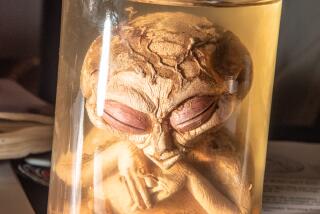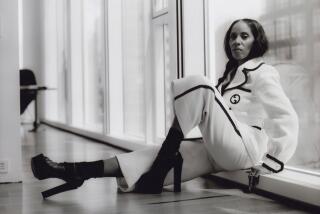The Aura of the Office
- Share via
Back in 1960, John Kenneth Galbraith lamented that the nation’s political conventions had become “an occasion when almost nothing happens.” If Galbraith was in a minority then in this conviction, he certainly is not today, when we hear from every direction how meaningless conventions are.
Yet today’s received wisdom is certainly wrong. Far from having lost their purpose, the conventions remain one of the nation’s most important political rituals, and far from being mere fluff -- a chance to wear funny hats -- they are central to American politics.
What decides presidential campaigns is not the issuing of position papers (which few voters ever read) or the crafting of party platforms (ditto). Our political allegiances are formed not so much by rational decision-making as by choosing a winner in a battle of symbols, fought through competing rituals.
During the Democratic convention, John Kerry -- flanked by his Navy boat-mates as he stood at the podium in a hall adorned with U.S. flags -- did all he could to look presidential. The Republican Party, aware how important it was to undercut these efforts, released not one but two anti-Kerry videos during the four-day convention.
Now, as they open their own convention, the Republicans have a big advantage because George W. Bush, as president, benefits from the sacred aura that surrounds his office.
To understand why the presidency is so emotionally potent for Americans, a look at other wealthy societies is instructive. Among them, the United States is unusual in combining two roles in one office -- the head of state, generally a unifying figure above partisan politics (often a monarch, sometimes a president), and the head of the government, by contrast a political figure very much in the thick of partisan combat (a prime minister, for example).
Popular worship of the person who, as ruler, embodies the whole society is very ancient indeed. Because such rulers were thought to be agents of divine powers, they had to be approached through highly ritual means. In ancient Hawaii, in Africa, Asia and parts of the Americas, they were viewed as descendants of the gods and believed to radiate supernatural power. Their touch was so powerful that it was dangerous to mere mortals.
In Europe as well, kings ruled for centuries by divine right, and people believed that the monarch could cure the sick by merely placing his hand on them.
All this should help explain what, to many intellectuals, seems so baffling -- the ardor with which crowds have sought a glimpse of President Bush and the strong emotions generated by his highly ritualized appearances. In Phoenix in mid-August, for example, his advisors selected a local campaign volunteer to greet him on his arrival.
“I practically started crying,” she told the press, “I didn’t feel I deserved it.” She hoped, she said, she wouldn’t faint.
If Kerry runs little risk of incapacitating voters, it probably has more to do with presidential charisma than personal attributes.
Consider what happens as Bush enters a room: “Hail to the Chief” sounds, flag bearers appear and a disembodied voice says, “Ladies and gentlemen, the president of the United States.”
Not for nothing is he photographed descending the steps of Air Force One, or flanked by British Prime Minister Tony Blair, or standing behind a podium emblazoned with the presidential seal.
And although the power of a president’s touch doesn’t extend to the laying on of hands, what are we to make of the practice of using dozens of pens to sign a bill into law, so that the supplicants gathered to watch can possess a shard of the presidential aura?
Bush by now must know that the very power of the ritual that surrounds him also makes such displays potentially hazardous.
If, in May 2002, he had boasted in a radio address that the U.S. had accomplished its mission in Iraq, it’s likely that few would have remembered or cared. But by enacting a complex ritual -- landing in a Navy jet on an aircraft carrier, wearing a flight suit and helmet, standing beneath a banner reading “Mission Accomplished” -- Bush fixed an image in the public mind in a way that no speech or position paper could ever have done.
This week, the Democrats can only hope that the president heeds the advice of those who may be urging him to use the convention to offer detailed policy proposals, or, better yet, that he somehow mistimes or mishandles the stuff of ritual, as he did in his landing on the aircraft carrier Abraham Lincoln.
But if instead he succeeds in blending sacred American symbols in a way that reinforces his status as the nation’s two-in-one leader -- its high priest -- he is going to be hard to beat.
*
David I. Kertzer, a professor of anthropology and Italian studies at Brown University, is the author of “Ritual, Politics, and Power” (Yale University Press, 1988). His latest work, “Prisoner of the Vatican,” will be published this fall by Houghton Mifflin.
More to Read
Get the L.A. Times Politics newsletter
Deeply reported insights into legislation, politics and policy from Sacramento, Washington and beyond. In your inbox three times per week.
You may occasionally receive promotional content from the Los Angeles Times.










